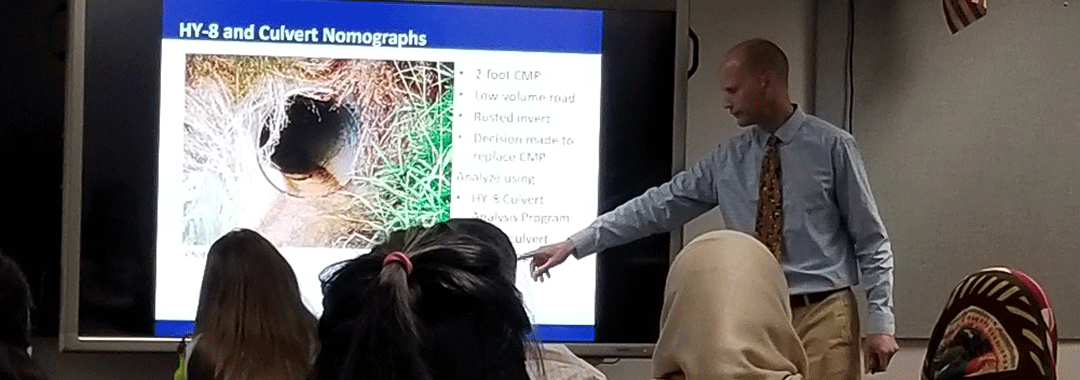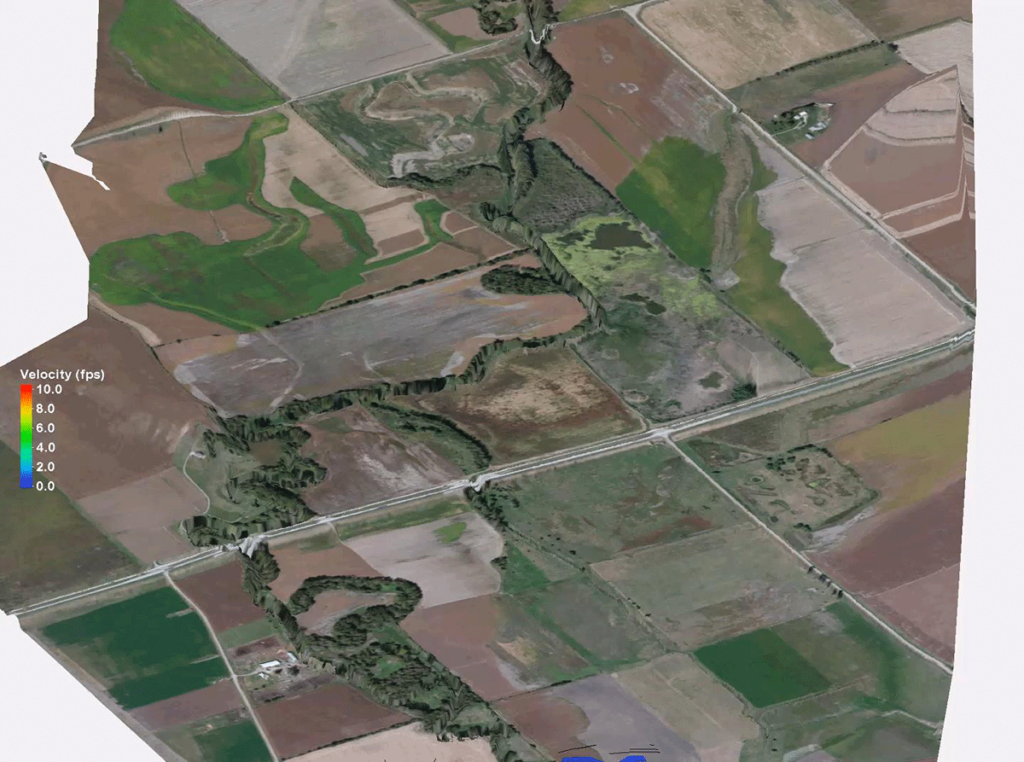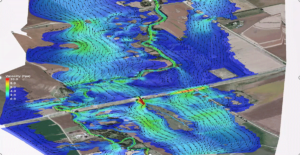On August 6th the NJDOT Bureau of Research hosted a Lunchtime Tech Talk! on “EDC-5 CHANGE: Collaborative Hydraulics (2.0) Advancing to the Next Generation of Engineering.” This event featured a presentation by Dr. Eric Brown, Senior Hydraulic Engineer, Geotechnical & Hydraulic Engineering, from the FHWA’s Resource Center. Under Round 5 of the Every Day Counts (EDC) program, Collaborative Hydraulics (2.0) provides the next-generation hydraulic modeling tools to improve the understanding of complex interactions between river or coastal environments and transportation assets, enabling better design, enhanced communication, and more efficient project delivery.
Dr. Brown began his presentation by providing a background of the discipline of hydraulic engineering and its place within the Federal Highway Administration (FHWA). This included an overview of the hydraulic engineering team at FHWA, including specializations and technical expertise. The National Hydraulic Team provides its FHWA offices nationwide with assistance in the hydraulic discipline. This includes interpreting policies, publications, advancing new technologies, and recommending guidance when division offices are faced with unusual drainage problems.
Through the EDC-5 Initiative, FHWA has begun implementing its next-generation hydraulic modeling tools. Thanks to recent advances in computer hardware, modeling software, and data collection, 2-D modeling has become very efficient, intuitive, and accessible to engineers and designers. Not only are 2-D models more accurate, but they can be communicated easily to others in 3-D form.
Dr. Brown then introduced various tools that showcase FHWA’s capabilities. These included channel analysis, Weir analysis, detention basin analysis, riprap design, culvert assessments, and bridge scour analyses. These tools were then further highlighted through the hydraulic models FHWA utilizes with their newest software. These models were used to determine elevation, shear stresses, and flow velocities to assist with construction decisions. Several other software were also highlighted, such as the US Army Corps of Engineers Hydrologic Engineering Center’s River Analysis System. This software allows the user to perform one-dimensional steady flow, one and two-dimensional unsteady flow calculations, sediment transport/mobile bed computations, and water temperature/water quality modeling. In particular, the ability for one- and two-dimensional unsteady flow simulation provided the user the greatest ability to perform analysis of water flow through open channels, floodplains, and projecting impact to construction projects.
With so many available tools and models, Dr. Brown’s discussion turned to his advice on what models were most appropriate for which situations. Dr. Brown recommended the 2-D modeling software for floodplains, tidal conditions, stream and river crossings with multiple bridges, and many other situations in which water was flowing in many different directions. Through the use of various examples from across the country, Dr. Brown described how these 2-D models can provide more accurate designs with a more visually intuitive way of communicating their results. Dr. Brown also demonstrated the ability of 2-D modeling in dealing with the aftermath of flood events; in one example after a flood had damaged the bridge deck and abutments, 2-D modeling was used to determine the amount of roadway and bridge overtopping flow to assist designers with the new roadway profile and scour protection.
This EDC-5 initiative has introduced dozens of DOTs around the country to these 2-D modeling tools. Dr. Brown highlighted these implementations from DOT’s in states like Alaska, Georgia, Nevada, and Montana. He then pitched the value of the model to NJDOT, not only in the power and strength of the tool, but in the ability that the use of cutting edge technology would provide NJDOT in its mission to attract and retain a high quality workforce.
Resources
View the presentation: Brown, E.R. (2019). New Jersey Department of Transportation Tech Talk: EDC-5 CHANGE and 2-D Modeling Considerations.



